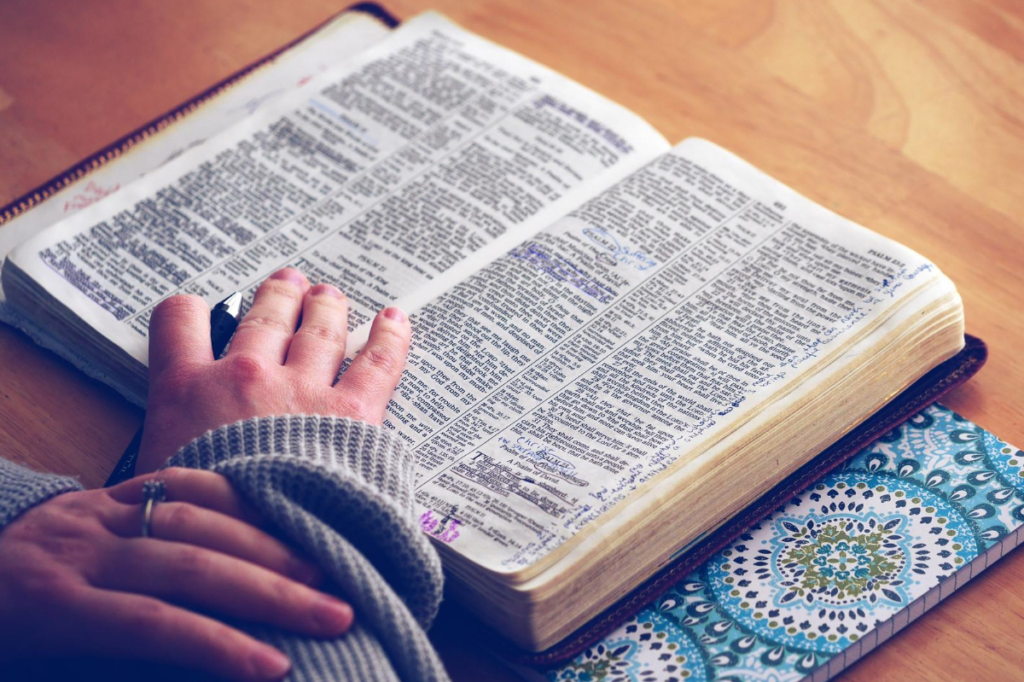
Terror, challenge, and reimagined community in biblical treatments of disability
By Rev. Dr Kylie Crabbe
It probably won’t surprise any of us that there are passages in the gospels that can be deeply painful for people who identify as living with a disability. In one of my favourite phrases, biblical scholar Sharon Betcher describes, “the terror of the miracle tradition.”[1]
There’s a good chance we’ve all been in conversations with people inside or outside the church grappling with questions that arise from gospel miracles. Sometimes it is a heartbreaking conversation with someone who longs for healing and may even have been told that their continuing infirmity must be a sign of inadequate faith. For others, the ways in which these passages presume that, say, someone with a lifelong visual impairment is somehow “less than” a sighted person (needing to be changed in order to enter fully into discipleship with Christ or into the kingdom of God), can utterly undermine their sense of inclusion in the church or experience of grace. It’s clear that we need to reflect carefully on how we use these texts.
One helpful reminder that recent biblical scholarship has offered is to be mindful of the contextual nature of disability, and the differences between the contemporary and first-century worlds. Disability theorists have a range of different ways of talking about disability, but one thing that’s commonly noted is that there is a social side to it—not all kinds of human variation are labelled “disabilities.” In addition, the extent to which our differences impair our activity will be contextual. So, for instance, the fact that I’m too short to reach things on the top shelf of the kitchen cupboard without a portable step impairs my activity in the kitchen, but it’s a bonus when I’m on an aeroplane. All the same, this particular human variation, though sometimes an impediment, doesn’t get called a “disability” in my social setting.
The social and cultural aspects of how a “disabling” condition is understood should give us pause when we encounter the biblical world. For instance, a disability that makes literacy difficult in our setting might be less debilitating in the largely oral culture of the first century. On the other hand, the ancient setting seems to treat a range of other human differences as disabling, with related social consequences like exclusion, including infertility, skin diseases, and even, for some early Christian texts, the experience of sexual desire. Even what it means to have a visual or mobility impairment, or to be deaf, is quite different between the ancient and contemporary settings. So we can’t just transpose assumptions about conditions that cause social exclusion or difficulty in day-to-day life in the ancient text into our world’s account of what disability is or how it shapes a person’s life.
While we’re at it, any careful reflection on a gospel passage that relates to disability will involve attending to whose perspective is front and centre in the passage. We will ask ourselves: is this one of those examples in which a character with a disability is involved, but they’re not really a full character? In a lot of gospel passages we don’t get to know the characters with disabilities, they don’t have a backstory, and they serve a narrative purpose that is not really about them. There is a technical literary term for this, coined by David Mitchell and Sharon Snyder, namely: “narrative prosthesis” (a nice play on words!).[2] It means that the characters with disabilities are really just props holding up some other purpose in the story.
We see characters with disabilities being used for another purpose, for instance, in passages from Isaiah that align God’s final end-time reign with the removal of disabilities, or in Mark where healings show that Jesus’ ministry is inaugurating the kingdom of God. Attending to perspective in this way should also help us to avoid the common trap of using different kinds of disabilities as metaphors, rather than seeing real people behind the descriptions (and being careful with biblical passages that do use such metaphors). We will avoid liturgies (or hymns!) that use “blindness” to describe an inability to understand or recognise the truth, or “deafness” as a term for hard-heartedness and a failure to turn and embrace the good news, and so on.
It’s worth asking: are these complicated, sometimes “terrorising,” passages all that the bible has to offer those who read from a disability perspective, though? Thankfully not. In fact, we get core characters—protagonists—who have impairments. Paul says that it is because of an infirmity that he first came to Galatia (Gal. 4.13-15). This has sparked Paul’s readers over millennia to wonder about his infirmities—is it something to do with his eyes? Or epilepsy? Or something else that makes him unimpressive in person? We should also remember that before him, Moses is described as having a speech impediment, Eli had become blind, and so on. Elsewhere in early Christian literature we encounter Elizabeth’s infertility, Timothy and John’s “many weaknesses,” and Peter’s daughter’s paralysis.
My research into disability in early Christian texts centres on the questions that arise when we move beyond the texts in which those with impairments are seen as peripheral “others.” I ask: what happens when the person with an impairment turns out to be a main character? When it is someone like Paul? How does this reshape how we understand strength and weakness? What happens when we are dealing with the disability of someone that we come to know well, who is not one-dimensional, and who is certainly not defined by their impairment? This invites us, I think, to notice the central place that impaired figures hold in the bible and to notice that their impairments do not define their discipleship. It challenges us to see the Christian story from the vantage point of those with impairments, who might be stigmatised or overlooked on the periphery, but who turn out to be key witnesses to Christianity, which after all has at its centre the one who suffers, and who suffers with.
Finally, in reflecting on how to approach biblical accounts of disability, I find myself frequently going back to the words of a disability theologian from Aberdeen, John Swinton, who says: the most any of us can ever claim is that we are temporarily able bodied.[3] This invites us into an awareness of the perhaps false distinction between “abled” and “disabled” in any case. There’s a confronting reality in those words—we begin life dependent on those who care for us, and experience limitations and impairments as we age—perhaps even the exhilarating moment of our early twenties when we felt utterly independent was not quite the truth of it either.
When applied to our reading of the bible, this kind of thinking draws attention to an all-too-common implicit assumption in our reading practices: we so often fall into the trap of assuming a “normal” perspective. Without perhaps consciously defining a word like “normal” at all, we assume that the “normal” writer of a biblical text, as well as the “normal” reader or Christian is able bodied, without limitation, strong, well-educated, often male, and so on. But how many of the people in our churches feel “normal” in that kind of narrow way, as we care for people who are ageing, or welcome all those who are struggling? Indeed, do any of us feel like that kind of “normal”?
As we reflect on who we are as the church, may the sense of our shared vulnerability never drown out the much-needed voices of those who identify as living with a disability. Indeed, the biblical account tells us that these voices occupy a central place. As we discern what we have to say as the church in the face of the Royal Commission into the Disability sector, or how we think about the extraordinary measures taken in the COVID-19 pandemic to protect the vulnerable, may we be reminded of our ultimate connection to one another, as diverse and much-loved people of God.
And in this reimagined community, where we remember Paul’s infirmity alongside Elizabeth’s infertility and the myriad different humans who have followed the one who suffers, and who suffers with, through the centuries since, may we learn to put these experiences at the centre of the Christian story, even as we are reminded that ability or disability defines neither our discipleship nor our place at the table.
[1] Sharon V. Betcher, “Disabilty and the Terror of the Miracle Tradition,” Miracles Revisited: New Testament Miracle Stories and Their Concepts of Reality, ed. Stefan Alkier and Annette Weissenrieder (Berlin: de Gruyter, 2013), 161-81.
[2] David T. Mitchell and Sharon L. Snyder, Narrative Prosthesis: Disability and the Dependencies of Discourse (Ann Arbor: University of Michigan Press, 2000), 40-50.
[3] John Swinton, Dementia: Living in the Memories of God (Grand Rapids: Eerdmans, 2012).

Rev. Dr Kylie Crabbe is a Minister of the Word in the Uniting Church. She is a Senior Research Fellow at Australian Catholic University in the area of Biblical and Early Christian Studies, and Associate Teacher at Pilgrim Theological College. She is also a Panel Member for the Growing in Faith Circle.
